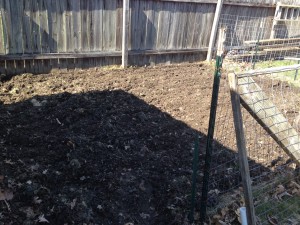Before you prepare your spring garden, plan to keep records of what varieties you plant, how you plant them and what you’re learning as you garden. In later years, you can look back at your garden records and decide what to change or keep the same.
Garden recordkeeping can include sketches of your garden space, lists of plant varieties to grow in the future and notes of your plants’ progress throughout the growing season.
Types of recordkeeping

North Carolina State University Cooperative Extension – Guilford County offers some questions to help you determine your style of recordkeeping. If you like to keep things in order, a calendar may work best. A digital garden file would make organizing records simple and efficient. If chronological order doesn’t matter much to you, a notebook or binder of looseleaf paper will work well. Using graph paper is a good idea to help with drawing diagrams.
Related: 3 ways to plan your garden: paper, virtual or template
It’s up to you to decide how much or how little detail you want to keep about your garden. Think about your gardening goals to help guide your records. Are you using your garden as a learning experience for children? Do you want to can tomatoes at the end of the season? Asking yourself questions like these can help you determine what kind of gardening space and layout you need, as well as what you need to keep track of throughout the year.
Getting started
The University of Nevada Cooperative Extension offers one method of garden recordkeeping. The method breaks records into four categories: garden/landscape design; preparing and treating your garden; planting schedule; and growth and harvest chart. The following are the details to include:
Garden/landscape design

Sketch your garden by hand. Use graph paper and denote the scale (how many feet are represented by one square). The University of Nevada Cooperative Extension includes all landscape and property features in its sketch, including the house, garage, driveway and flowerbeds. Remember to account for any sprinklers or utility lines that are on your property.
You can also use online tools to sketch your garden. Zukeeni (formerly Smart Gardener) and Garden Planner are websites that allow growers to map out their garden spaces with potential plants. Some features must be purchased. All Things Plants offers gardeners a quick guide for when to begin sowing seeds indoors, when to transplant seeds and when to directly sow seeds in the garden. All that is required is the grower’s zip code. Bear in mind that the dates are approximate; gardeners must still pay attention to weather conditions like frost.
Preparing and treating your garden
Preparing and treating your garden deals with soil testing, problems, amending and pest management. The University of Nevada Cooperative Extension offers an example chart to keep track of these areas. You may also want to record your soil type and notes about planting in that particular soil type.
Planting schedule

Other important items you’ll want to include in your records are dates for watering, tilling, fertilizer application and mulching. You can record the types and amounts of fertilizer and mulch you use, as well as watering amounts and methods (drip irrigation, hose, sprinklers, hand watering). Crop rotation is another factor to incorporate into your garden records, according to Oregon State University Extension Service.
Growth and harvest chart
Lastly, your garden records will include growth and harvest data. The University of Nevada Cooperative Extension recommends measuring plants periodically during the growing season to determine if management practices are working or if they need to be changed. A sample chart is included in the organization’s publication.
When you harvest your plants, keep track of the size of the harvest and record it, along with the dates.
Weed problems are an additional aspect you may want to keep track of in your records. Include treatments — hand pulling, cultivating, spraying or other remedies — and their effectiveness over time.
Additional recordkeeping
If you want to keep your garden on a budget, you can record all expenses for seeds, fertilizer and any weed, insect or pest control used throughout the year, plus the cost of new tools and equipment.
Do you keep records for your garden? Tell us about them in the comments below.
More garden tips:
- Going organic this spring? Tips and tools to help you grow
- Tips for ordering from seed catalogs
- How to prepare tools for spring gardening
- How should I arrange the plants in my garden? A guide to companion planting
- Tech meets the garden: 4 products for your growing season
- How to save money in the garden: 5 tips











